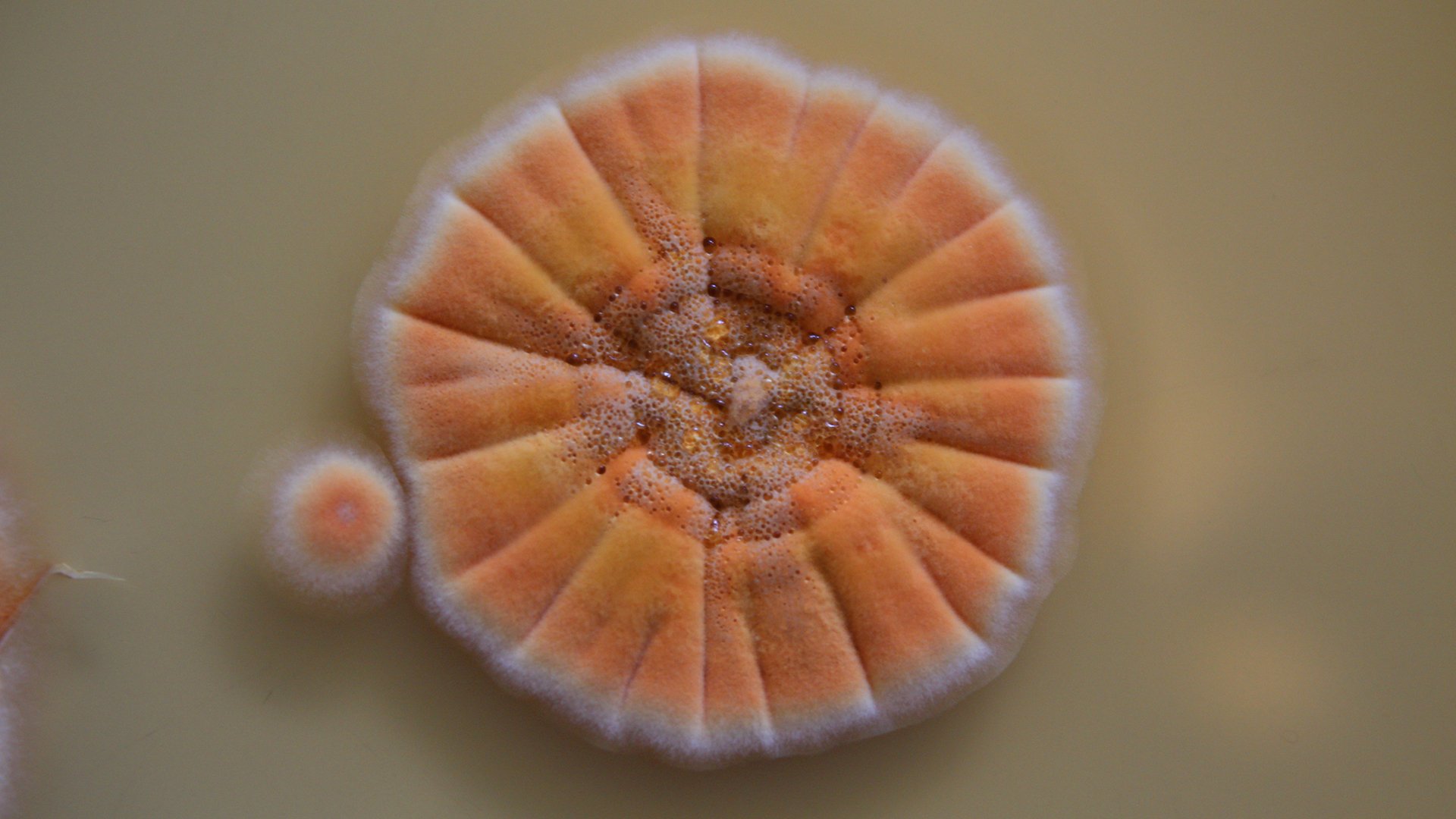Penicillium fungi take their name from the Latin word penicillatis, meaning ‘pencil-like’; in Dutch, they are sometimes referred to as pencil brush fungi. While these fungi are most famous for their role in producing antibiotics, they are useful in other ways as well. The species Penicillium roqueforti, for instance, is used in making several kinds of cheese.
Penicillium fungi take their name from the Latin word penicillatis, meaning ‘pencil-like’; in Dutch, they are sometimes referred to as pencil brush fungi. While these fungi are most famous for their role in producing antibiotics, they are useful in other ways as well. The species Penicillium roqueforti, for instance, is used in making several kinds of cheese.
Bright orange
Penicillium vanoranjei is an orange fungus first described by researchers at the Westerdijk Fungal Biodiversity Institute in 2013. This species of Penicillium was discovered in soil samples from Tunisia. Unlike most Penicillium species, which tend to form white or greenish-blue colonies, this species is bright orange in colour.
Namesake
The discovery of this species coincided with the coronation of the (then) Prince of Orange Willem-Alexander on 30 April 2013. In honour of this event, the scientists decided to name the fungus for the new King of the Netherlands. The species name vanoranjei is taken from the Dutch for ‘of Orange’ – a reference to the former Prince’s title and the Dutch royal family’s House of Orange-Nassau. In addition to P. vanoranjei, four other species within the genus were described as well: Penicillium maximae, Penicillium amaliae, Penicillium alexiae and Penicillium arianeae, named for Queen Maxima and the three Dutch princesses Amalia, Alexia and Ariane.

